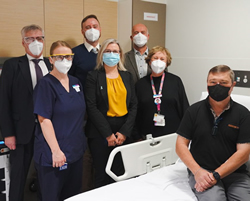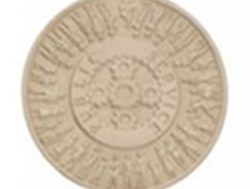
Pictured (L-R): Professor Toby Coates, Nurse Unit Manager Colleen Cunningham, Surgeon Dr Patrick Coghlan, Dr Dorota Pawlak: Juvenile Diabetes Research Foundation, Professor John Greenwood CALHN CEO Professor Lesley Dwyer, and patient Alec Tibbitts.
A world-first treatment for type 1 diabetes on trial at the Royal Adelaide Hospital (RAH) is showing promising results after the first surgery was performed earlier this month.
Announcing the treatment, the Central Adelaide Local Health Network (CALHN) said the revolutionary new method was a small step towards a legitimate cure for type 1 diabetes and implanted insulin-producing islet cells into an artificial dermis (skin) in the patient’s arm.
CALHN said islet cells were created in the pancreas and produced the hormones that regulated blood sugar, such as insulin.
“Transplantation of islet cells into the liver can help diabetics to produce their own insulin,” CALHN said.
“But with this method about 75 per cent of transplanted islet cells, donated from cadavers, are lost in the first 24 hours due to the limited supply of oxygenated blood to the liver.”
The Network said the game-changing new method was being led by Director of Kidney and Islet Transplantation at CALHN, Toby Coates.
“You have to process three pancreases to get one that will work, so transplanting into the liver is a very inefficient procedure,” Professor Coates said.
“So the quest around the world has been to come up with alternative sites where the cells might be more likely to survive, and that’s what led us to start working here, looking at implanting into the skin,” he said.
Professor Coates said the innovative treatment was less invasive than the liver implantation method and could also support alternative methods of sourcing donor islet cells.
“Stem cell-derived islets, for instance, may be able to be differentiated in a laboratory culture and then transplanted into the skin,” he said.
“This would further increase the precious supply, reducing or ending the reliance on rare donor islets.”
CALHN said the proof-of-concept study would include three patients and last for three months.
“If the trial is successful, the next step would be to gather further data from more participants,” it said.
“Clinicians and patients alike are optimistic that this world-class research can be pathway towards a cure for type 1 diabetes,” CALHN said.





